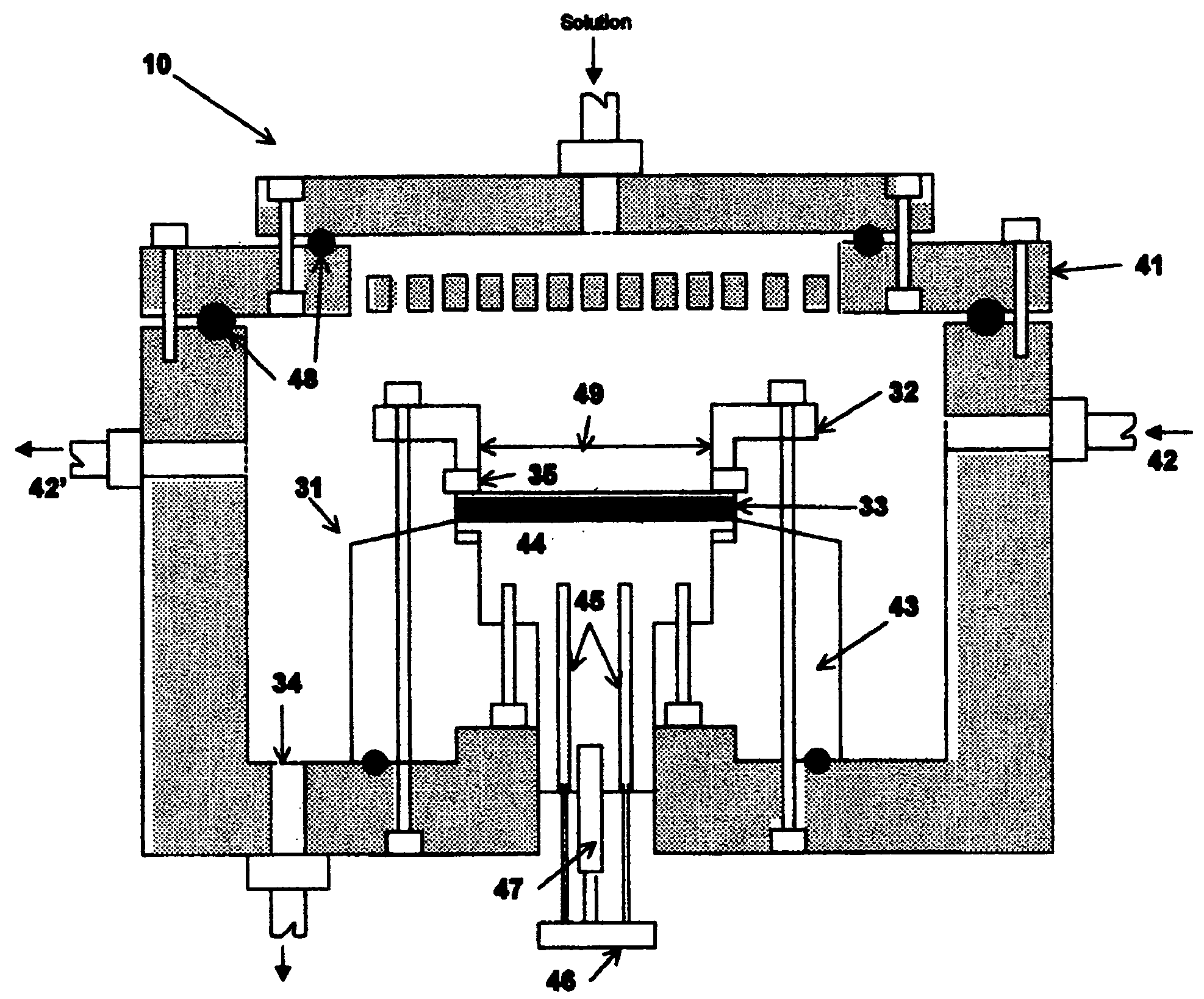Film growth system and method
a film growth and film technology, applied in the direction of liquid/solution decomposition chemical coating, transportation and packaging, coatings, etc., can solve the problems of limiting electrical performance characteristics, non-stoichiometric proportions, and deposited films often include relatively high defect densities, so as to improve physical, chemical, optical, and easy control
- Summary
- Abstract
- Description
- Claims
- Application Information
AI Technical Summary
Benefits of technology
Problems solved by technology
Method used
Image
Examples
Embodiment Construction
[0034]There has been a need for a chemical system that can create high quality films, e.g., semiconductor films, at high formation rates, while providing a relatively uniform film thickness across the entire substrate surface over which the film is formed. In accordance with several embodiments of the invention, such a high quality semiconductor film is formed by a replacement reaction wherein the system provides a continuous or replenishable supply of chemical processing solution. In several examples, the solution reacts about the surface of a heated substrate. The substrate temperature may be controlled to exhibit a substantially uniform temperature across the surface. That is, temperature differentials along the surface over which the film is formed are limited in order to effect a substantially constant reaction rate along the surface, thereby assuring a relatively uniform film growth rate. Further, the pH and composition of the solution may be continuously monitored and maintai...
PUM
| Property | Measurement | Unit |
|---|---|---|
| Temperature | aaaaa | aaaaa |
| Length | aaaaa | aaaaa |
| Length | aaaaa | aaaaa |
Abstract
Description
Claims
Application Information
 Login to View More
Login to View More - R&D
- Intellectual Property
- Life Sciences
- Materials
- Tech Scout
- Unparalleled Data Quality
- Higher Quality Content
- 60% Fewer Hallucinations
Browse by: Latest US Patents, China's latest patents, Technical Efficacy Thesaurus, Application Domain, Technology Topic, Popular Technical Reports.
© 2025 PatSnap. All rights reserved.Legal|Privacy policy|Modern Slavery Act Transparency Statement|Sitemap|About US| Contact US: help@patsnap.com



